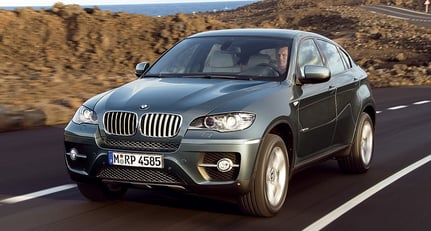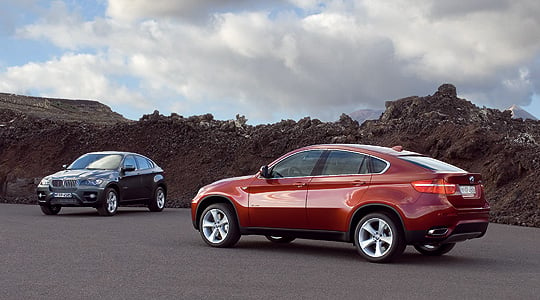
BMW says its new X6 sports activity coupé “heralds the dawn of a new era in motoring”. Really? There are certainly some interesting new facets to the X6 but the dawn of a new era in motoring? Hardly. And sadly, the overstatement overshadows what might well be an unusual, even excellent, new car. Instead of being impressed by the elegant but forceful styling and immensely powerful turbocharged engines, it’s easy to feel a bit embarrassed by BMW’s brash claims.
BMW’s press release goes on to say that “never before have the elegant flowing lines of a coupé been combined with the powerful presence of a four-wheel drive model”. Yet there are many – albeit less prestigious – manufacturers who believe they’ve already done just that. But let’s forget the overstatements and concentrate on what the new X6 does offer – namely, the safety and convenience of a high driving position combined with the on-road performance of a sports car, packaged in the svelte lines of a coupé.
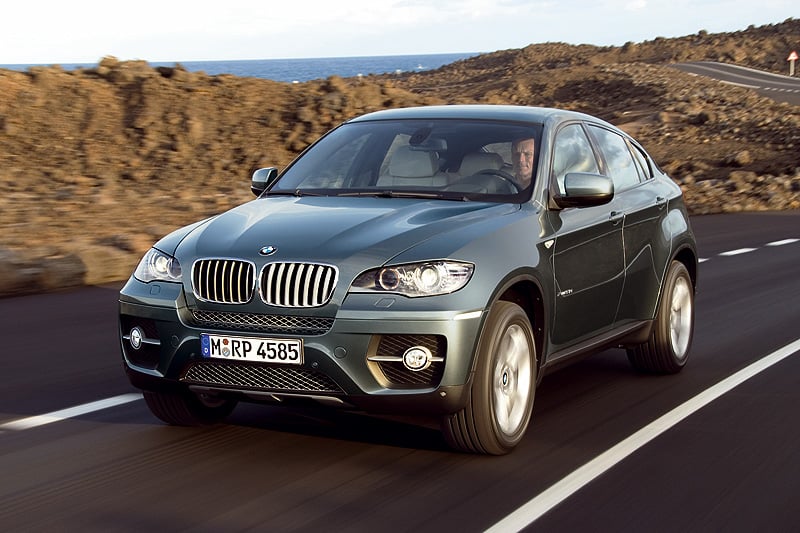
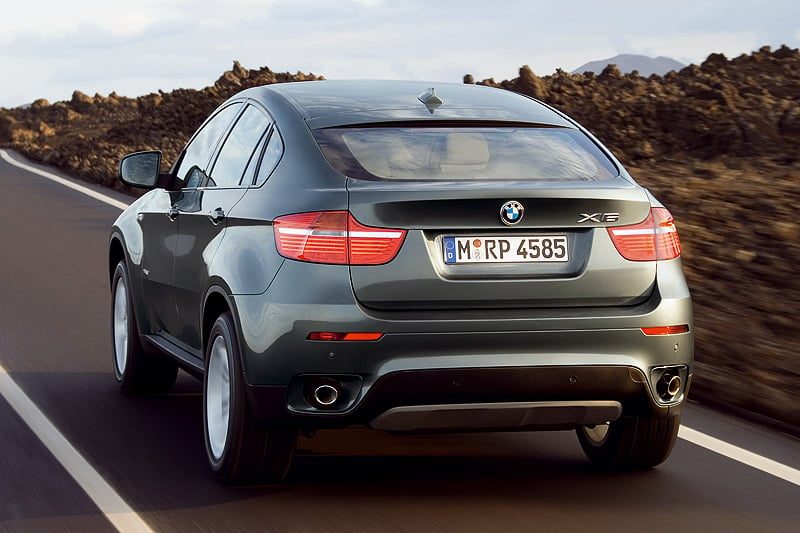
For the first time in BMW’s history, an entire model range is turbocharged, with the X6 offering four forced induction powerplants. The flagship is an all-new twin-turbocharged V8 producing 402bhp at 5500rpm. The 4395cc engine makes the BMW X6 xDrive50i the most powerful production X model BMW has ever produced, while its 600Nm of torque from 1800rpm through to 4500rpm propels the X6 from 0 to 62mph in 5.4 seconds. Top speed has been electronically limited to 155mph and fuel consumption on the combined cycle is 22.6mpg (with emissions at 299g/km).
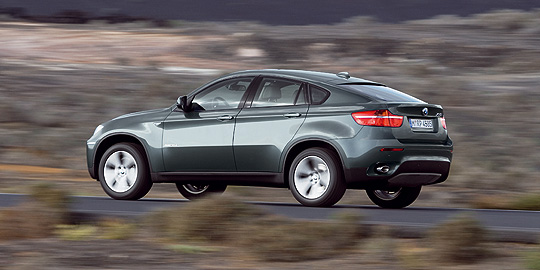
The configuration of the new V8 engine is unique in that it’s the first powerplant to locate twin-turbochargers and a catalytic converter within the vee of the engine. This design has allowed engineers to fit the twin-turbochargers needed for increased performance without having to reconfigure the double wishbone front suspension.
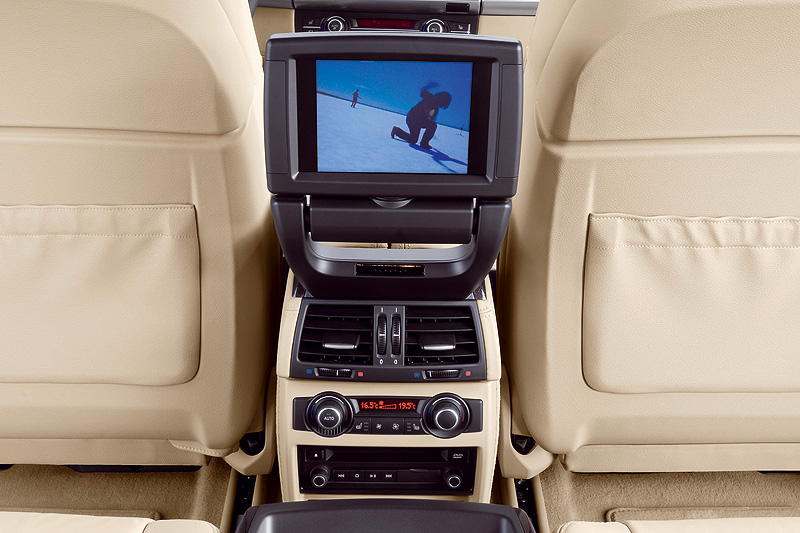
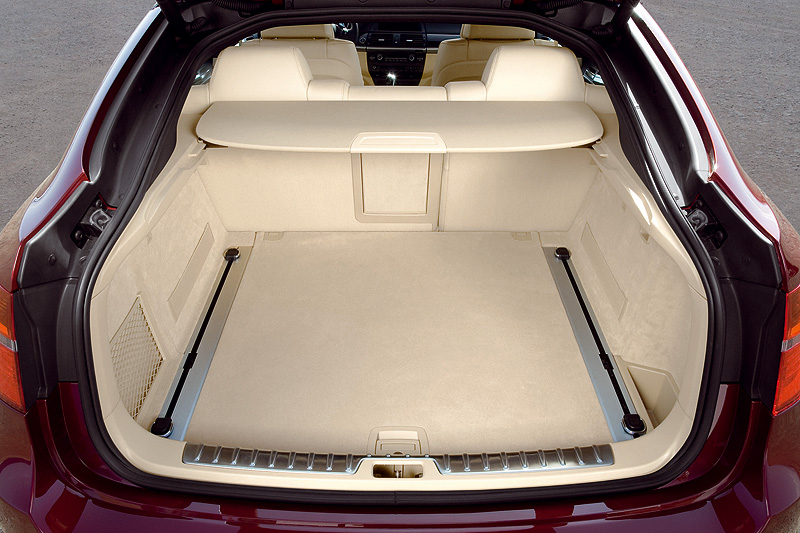
Other engine options are the 302bhp X6 xDrive35i, powered by the 3.0-litre twin-turbocharged six-cylinder petrol engine already available in the 1 and 3 Series, and two diesel variants, likely to be the biggest sellers in the UK. These latter engines are the 232bhp xDrive30d and 282bhp xDrive35d.
In addition to the engines, the X6 range offers many new ‘intelligent’ technologies to enhance performance and driving pleasure. Brake Energy Regeneration, recycling previously lost energy, is one of the technologies helping to optimise fuel consumption, as are the reduced rolling resistance tyres.
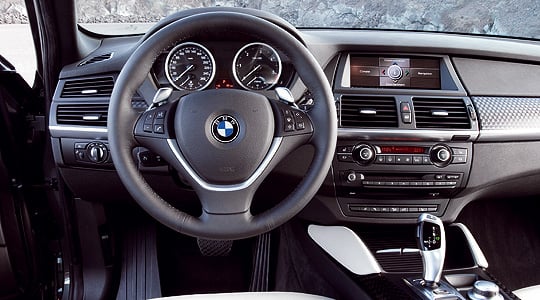
Twinned with BMW’s benchmark xDrive four-wheel drive system, Dynamic Performance Control makes its world debut on the BMW X6. Dynamic Performance Control works by spreading drive forces from side to side at the two rear wheels as required in a given situation.
The system works by detecting possible over- or understeer of the vehicle in, for example, a bend. When this occurs Dynamic Performance Control will vary the distribution of drive forces between the wheels for perfect stability, dynamic traction, and forward motion. This is achieved by transferring additional wheel speed to the outer rear wheel to push the car round the corner rather than applying brake force to the inner wheels as currently happens with traditional stability control systems.
The BMW X6 launches in May 2008 with prices starting at £41,995 for the entry-level xDrive30d. The flagship X6 xDrive50i goes on sale later in the year and prices for this model will be announced nearer the time.
Text: Charis Whitcombe
Photos: BMW
ClassicInside - The Classic Driver Newsletter
Free Subscription!
